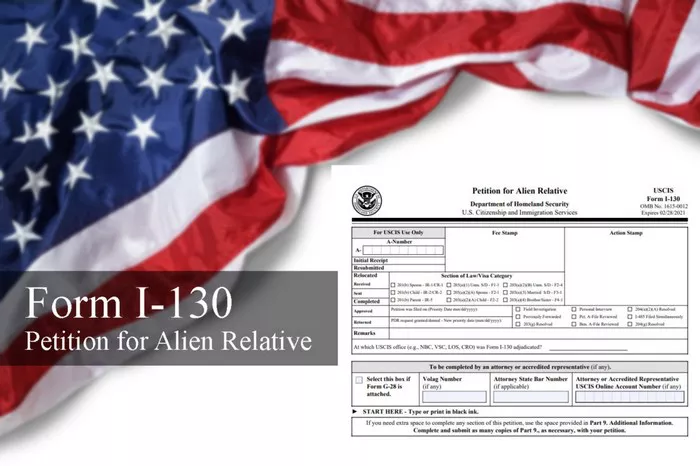The processing time for I-130 petitions, which are used to establish a familial relationship for immigration purposes in the United States, can vary significantly. Understanding these timelines is crucial for individuals navigating the complex immigration system. The U.S. Citizenship and Immigration Services (USCIS) is responsible for processing these petitions, and numerous factors influence the duration of the process. In this article, we will delve into the intricacies of I-130 processing times, exploring the various factors that can affect them and providing insights into what petitioners can expect.
Introduction to the I-130 Petition
The I-130 petition, also known as the Petition for Alien Relative, is a form filed by a U.S. citizen or a lawful permanent resident (green card holder) to establish a familial relationship with a foreign national relative who wishes to immigrate to the United States. This form is typically used to sponsor spouses, parents, children, and siblings for immigration purposes.
Once the petition is approved by USCIS, the foreign national beneficiary may be eligible to apply for an immigrant visa or adjust their status to that of a lawful permanent resident, depending on their circumstances. However, before reaching this stage, the I-130 petition must undergo a thorough review process by USCIS.
Factors Affecting Processing Times
Several factors influence the processing times for I-130 petitions. These factors can vary from case to case and may include the following:
1. Volume of Applications: The number of I-130 petitions received by USCIS can have a significant impact on processing times. During periods of high application volume, such as after changes in immigration policies or during family-sponsored immigration surges, processing times may increase due to the sheer volume of petitions that need to be reviewed.
2. Case Complexity: The complexity of an individual case can affect processing times. Cases that involve additional documentation, legal complexities, or issues related to the petitioner or beneficiary’s immigration history may take longer to adjudicate.
3. Incomplete or Inaccurate Filings: Petitions that are incomplete or contain errors may be delayed while USCIS requests additional information or documentation from the petitioner. It is essential to ensure that all required forms and supporting evidence are submitted accurately and completely to avoid unnecessary delays.
4. Background Checks and Security Clearance: USCIS conducts background checks on both the petitioner and the beneficiary as part of the adjudication process. Delays may occur if additional security clearances or background checks are required, particularly in cases involving national security concerns or individuals from certain countries.
5. Visa Bulletin and Priority Dates: For certain family-sponsored preference categories, immigrant visas are subject to annual numerical limits. The availability of visas may be determined by the visa bulletin published by the U.S. Department of State. If a visa is not immediately available based on the beneficiary’s priority date, the petition may be placed in a queue, resulting in a longer processing time.
6. USCIS Workload and Resources: USCIS workload and resource allocation can also impact processing times. Budgetary constraints, staffing levels, and internal processing procedures may influence the efficiency of the adjudication process.
Understanding USCIS Processing Times
USCIS provides estimated processing times for various immigration petitions and applications on its website. These processing times are updated regularly and are intended to provide applicants with an idea of how long they can expect to wait for a decision on their case.
However, it’s important to note that the posted processing times are only estimates and may not reflect the actual processing time for individual cases. Additionally, processing times can vary between USCIS service centers and field offices, as well as between different types of cases.
Checking Processing Times
Applicants can check the current processing times for I-130 petitions on the USCIS website. By entering the form type (I-130) and the location of the USCIS office handling the case, applicants can view the current processing times for that specific office.
It’s recommended to regularly check the USCIS website for updates on processing times, as they may change depending on workload fluctuations and other factors. Additionally, applicants can sign up for email notifications to receive alerts when there are updates to the processing times for their particular form and location.
Expedited Processing
In certain circumstances, USCIS may expedite the processing of an I-130 petition at the request of the petitioner. Expedited processing is typically reserved for cases that meet specific criteria, such as severe financial hardship, humanitarian concerns, or emergencies.
Petitioners seeking expedited processing must provide documentary evidence to support their request and demonstrate why their case warrants special consideration. USCIS has sole discretion in granting expedited processing requests, and not all requests are approved.
Conclusion
The processing time for I-130 petitions can vary widely depending on a variety of factors, including the volume of applications, case complexity, background checks, and USCIS workload. While USCIS provides estimated processing times on its website, these are only general guidelines and may not accurately reflect individual case processing times.
Applicants should be prepared for the possibility of delays and regularly monitor the USCIS website for updates on processing times. Additionally, those with urgent circumstances may explore the option of requesting expedited processing, although approval is not guaranteed.
Navigating the immigration process can be complex, but understanding the factors that influence processing times can help applicants manage their expectations and plan accordingly. By staying informed and being proactive, individuals can navigate the I-130 petition process with greater confidence and clarity.


